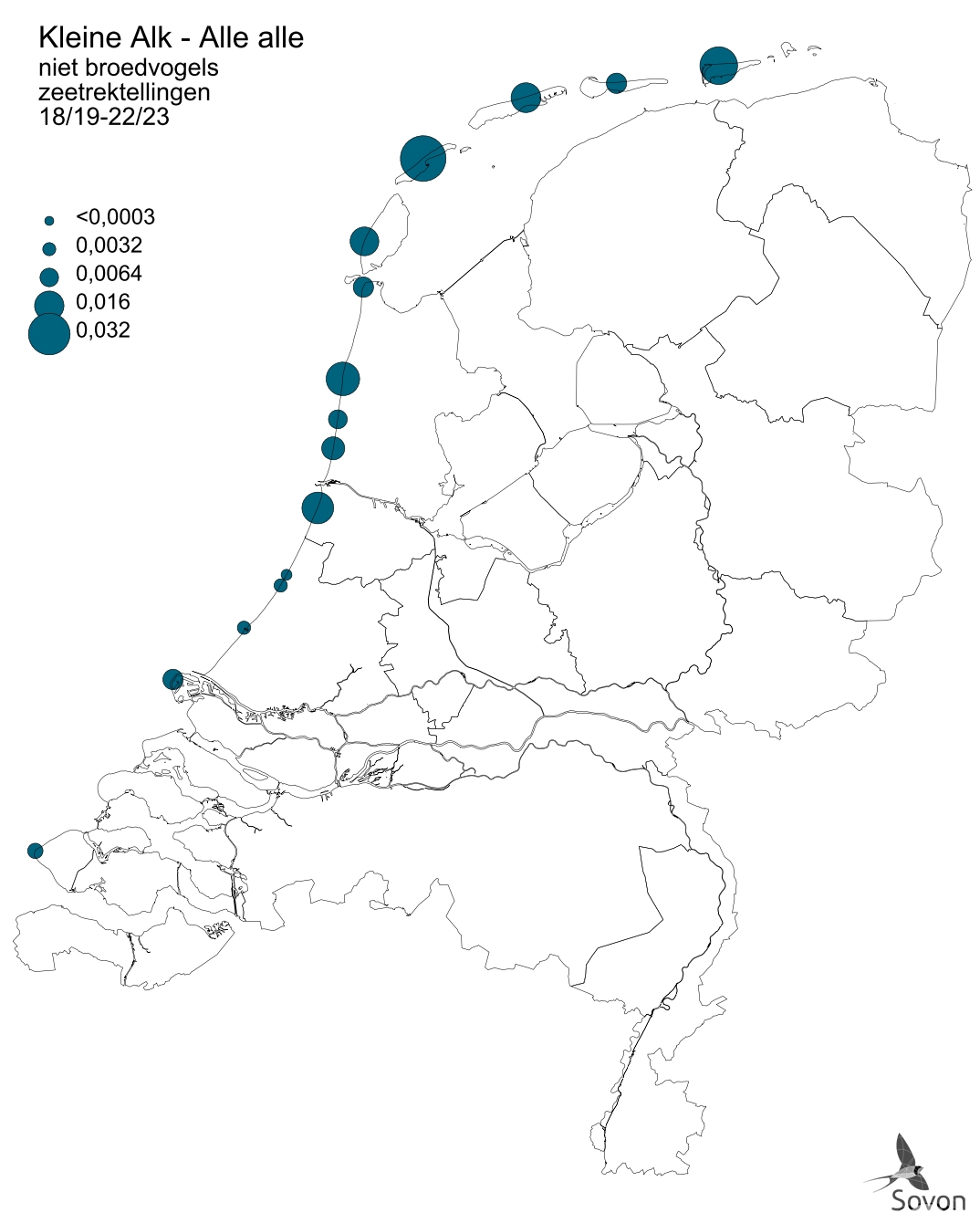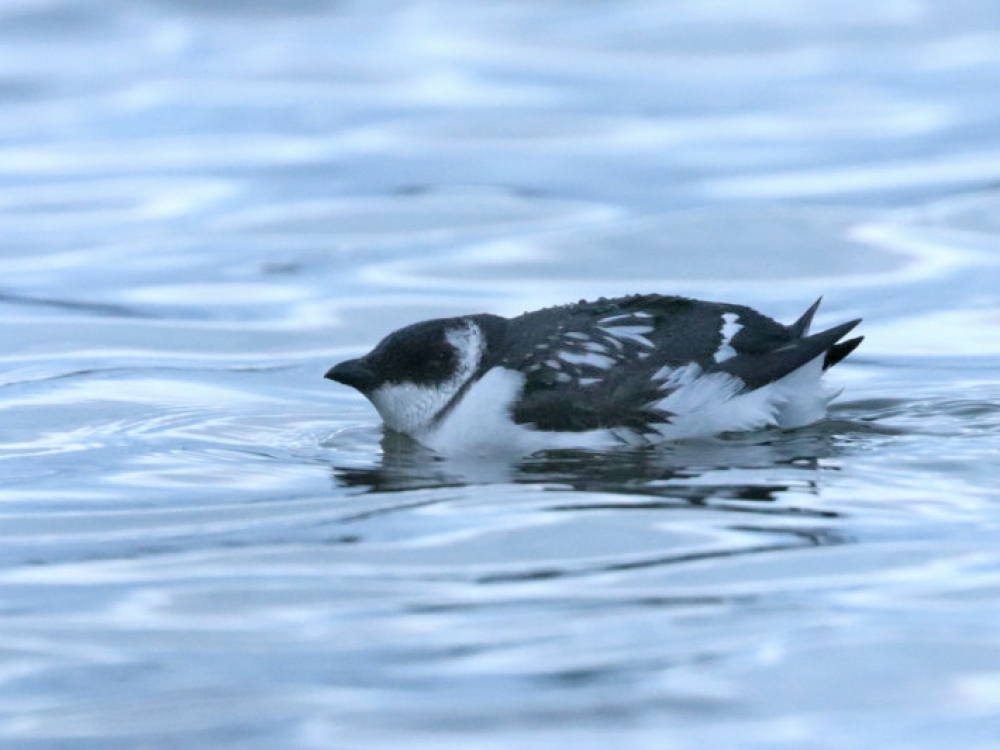Verspreiding en trends
Verspreiding

Deze kaart is gebaseerd op systematische waarnemingen van trekkende vogels (seizoen juli t/m juni). Weergegeven is het uurgemiddelde per telpost.
Aantalsontwikkeling
watervogeltrend
Deze grafiek is gebaseerd op systematische waarnemingen van trekkende vogels en systematische vliegtuigtellingen op de Noordzee (seizoen juli t/m juni). Weergegeven is de indexwaarde per seizoen (rode punten), de trendlijn (donker gekleurde lijn) en het 95% betrouwbaarheidsinterval van de trendlijn (lichtgekleurde lijn).
- vanaf 1991
- significante afname, <5% per jaar (-)
- laatste 12 jaar
- significante afname, <5% per jaar (-)
Broedsucces en overleving
Onvoldoende gegevens beschikbaar voor trendanalyse.
Seizoensvoorkomen
seizoenspatroon
Deze grafiek is gebaseerd op systematische waarnemingen van trekkende vogels Weergegeven is het gemiddeld aantal per maand in de laatste vijf seizoenen, met onderscheid naar vogels die naar links en rechts vlogen.
Beschrijving voorkomen
Buiten broedtijd
Bijna alle Kleine Alken worden langs de kust gezien, met name bij harde aanlandige winden. De meeste waarnemingen vallen tussen eind oktober en half december. De soort is meestal schaars, maar soms passeren vele honderden (of meer) Kleine Alken de zeetrektelposten. Dan wordt de soort ook schaars waargenomen in de kustprovincies of zelfs in het diepe binnenland.
Vogelrichtlijn
Staat van instandhouding
De Vogelrichtlijn richt zich op de instandhouding van alle natuurlijk in Europa in het wild levende vogelsoorten waaronder de Kleine Alk.
Dit betekent dat de EU-lidstaten maatregelen moeten nemen om de populaties van deze soorten op een niveau te houden of te brengen dat met name beantwoordt aan de ecologische, wetenschappelijke en culturele eisen. Daaronder wordt onder andere een gunstige staat van instandhouding verstaan. Het begrip Staat van instandhouding is zo ongeveer synoniem voor de mate van duurzaamheid of gezondheid van een populatie van een soort.
De Vogelrichtlijn verlangt van de lidstaten dat ze leefgebieden voor vogels in voldoende omvang en kwaliteit in stand houden, waaronder door de aanwijzing van speciale beschermingszones ten behoeve van het Europese Natura 2000-netwerk. Voor de Kleine Alk zijn in Nederland geen speciale beschermingszones aangewezen. De landelijke populatie moet zich wel op een gunstig niveau kunnen handhaven.
Methodiek voor de bepaling van de Staat van instandhouding van vogels
niet-broedvogel
De Staat van Instandhouding van de Kleine Alk als niet-broedvogel in Nederland is onbekend.
| Beoordeling Staat van Instandhouding | ||||
| Verspreiding | Populatie | Leefgebied | Toekomst | Eindoordeel |
| onbekend | onbekend | onbekend | onbekend | onbekend |
Aangewezen gebieden
Er zijn geen gebieden aangewezen voor deze soort.
Telrichtlijnen
Er zijn geen telrichtlijnen voor deze soort.
